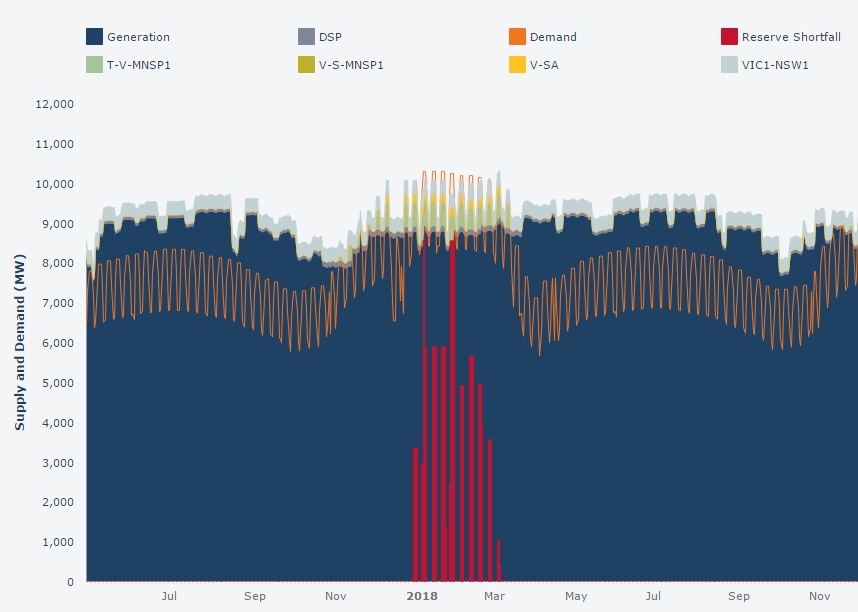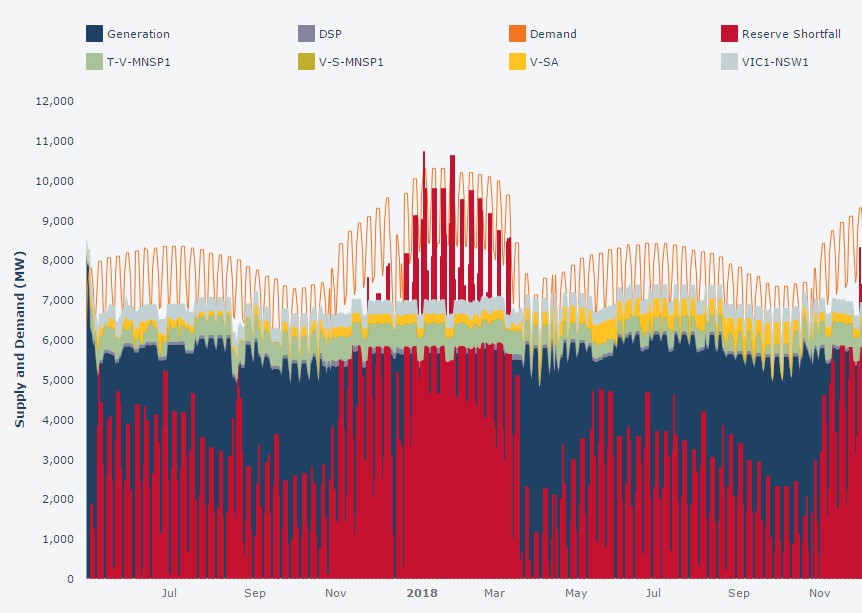The Australian Energy Market Operator (AEMO) has released its final report on the South Australia (SA) region black system event on 28 September 2016 (Black System). During the event some 850,000 SA customers lost electricity supply, affecting households, businesses, transport and community services, and major industries.
In the report, AEMO notes that with less synchronous generation online, the electricity system is experiencing more periods with low inertia and low available fault levels. This is making it increasingly difficult to keep the system secure. It is no longer appropriate to rely solely on synchronous generators to provide essential non-energy system services (such as voltage control, frequency control, inertia, and system strength). Instead, additional means of procuring these services must be considered; from non-synchronous generators (where it is technically feasible) or from network or non-network services such as demand response and synchronous condensers.
AEMO has already released three preliminary reports describing the events on 28 September 2016 and the immediate actions undertaken.
AEMO’s final report has 19 recommendations, 3 of which have already been implemented.
System Event
On Wednesday 28 September 2016 tornadoes with wind speeds in the range of 190–260 km/h occurred in areas of South Australia. Two tornadoes almost simultaneously damaged a single circuit 275 kilovolt (kV) transmission line and a double circuit 275 kV transmission line, some 170 km apart. The damage to these three transmission lines caused them to trip, and at 4.16pm a sequence of faults in quick succession resulted in six voltage dips on the SA grid over a two-minute period. As the number of faults on the transmission network grew, nine wind farms in SA exhibited a sustained reduction in power as a protection feature activated. For eight of these wind farms the protection settings of their wind turbines allowed them to withstand a pre-set number of voltage dips within a two-minute period. Activation of this protection feature resulted in a significant sustained power reduction for these wind farms. A sustained generation reduction of 456 megawatts (MW) occurred over a period of less than 7 seconds.
The reduction in wind farm output caused a significant increase in imported power flowing through the Heywood Interconnector. Approximately 700 milliseconds after the reduction of output from the last of the wind farms, the flow on the Heywood Interconnector reached such a level that it activated a special protection scheme that tripped the interconnector causing it to go offline. The SA power system then became separated (“islanded”) from the rest of the National Electricity Market. Without any substantial load shedding following the system separation, the remaining generation was significantly less than the connected load and unable to maintain the islanded system frequency. As a result, all supply to the SA region was lost at 4.18 pm, resulting in a ‘Black System’.
The first round of customers had power restored by 7.00 pm the same day. Approximately 90% of load in SA had been restored by midnight. The remaining load was gradually restored as fallen transmission lines were bypassed, and all customers had supply restored by 11 October 2016.
Findings of the investigation
AEMO published a number of findings from the investigation. Critically it found that the wind farms were able to continue operation throughout the grid disturbances, and it was only the control system setting which caused them to turn off. Changes made to the turbine control settings shortly after the event has removed the risk of recurrence given the same number of disturbances. AEMO was not aware of these settings and they note that access to correct technical information is critical for system security.
The investigation found that if the wind turbines hadn’t switched off the Black System would have been avoided. AEMO cannot rule out the possibility that later events may have caused a black system, despite not being aware of any system damage that would have led to this.
In order to maintain a secure system, AEMO must have sufficient inertia in the system as well as frequency control and voltage stability.
AEMO recommendations
Following the Black System event, AEMO has come up with 19 recommendations to minimise the risk of SA being islanded and if so, can continue to operate if this occurs. These recommendations are in addition to operational changes which have already occurred. As mentioned, the windfarms have already changed their control setting to allow many more ride-throughs before switching off. They are also working to keep AEMO informed of any changes to control settings. The Heywood Interconnector is not running to as high capacity as previously operated to allow for more contingency. AEMO also require a minimum number of on-line synchronous generators in SA.
AEMO’s recommendations are summarised below. Of the 19 recommendations the following are likely to have the largest impact to the National Electricity Market.
• Stricter licensing of new generation
• AEMO to assess options for improved forecasting of wind speeds which can cause windfarms to cut out (not a feature of the blackout event)
• AEMO to modify operational procedures for SA island operations
• AEMO to support ElectraNet in reassessing control strategies to achieve very rapid switching of reactive plant to manage the risk of severe over voltages in SA that might occur due to large levels of under frequency load shedding following separation.
• AEMO to put in place more rigorous processes to monitor weather warnings for changes to forecasts, to trigger reassessment of reclassification decisions where relevant
• AEMO to review and implement, following consultation, a more structured process for reclassification decisions when faced with power system risks due to extreme wind speeds.
• AEMO to investigate a better approach to ensuring that the minimum stable operating levels of generating units are taken into account in the dispatch process
• AEMO to review market processes and systems, in collaboration with participants, to identify improvements and any associated National Electricity Rules or procedural changes that may be necessary to implement those improvements
AEMO plans to complete its recommendations by December 2017 but note that this may not be achievable subject to consultation time.
The full report can be downloaded here

